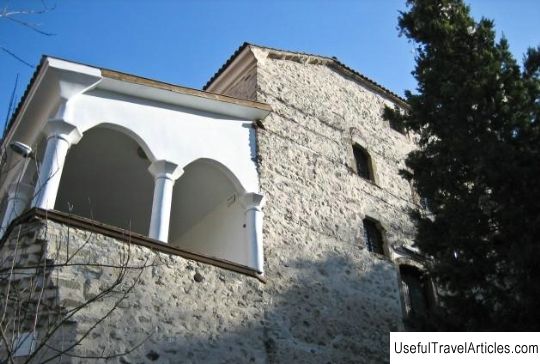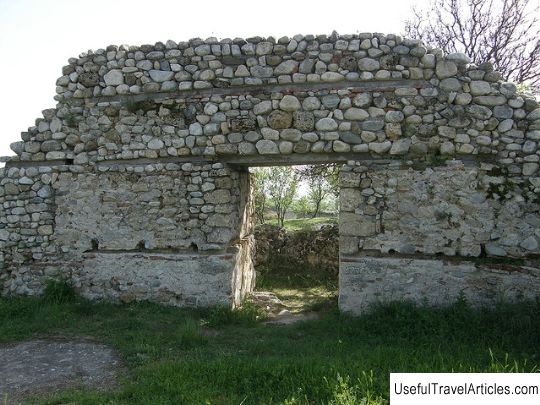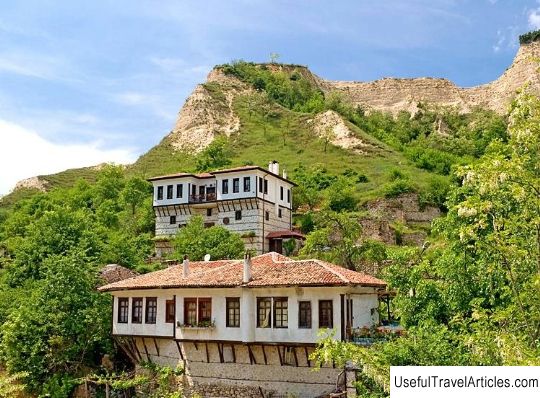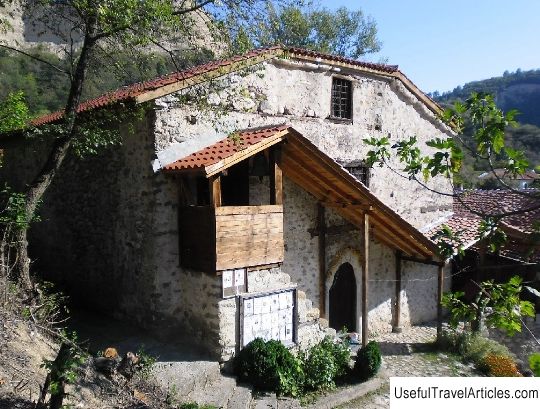Church of St. Nicholas description and photos - Bulgaria: Melnik
Rating: 7,8/10 (1332 votes) 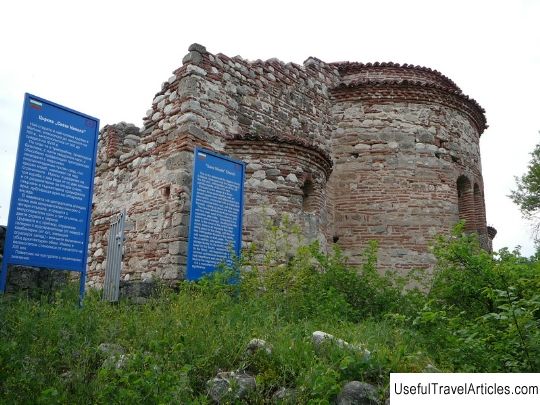
St. Nicholas Church description and photos - Bulgaria: Melnik. Detailed information about the attraction. Description, photos and a map showing the nearest significant objects. Photo and descriptionThe Church of St. Nicholas in Melnik, built during the Middle Ages, is one of the most interesting local attractions. Today this church is in ruins, but in the near future it is planned to carry out reconstruction and restoration as part of the FAR program. The church is located on the hill of St. Nicholas to the south of the city, a place that in ancient times was used as a sanctuary. Previously, there was a Thracian temple dedicated to the goddess Bendida, and later, in the 5th century, the basilica, which was supposedly destroyed in the 6th century. At present, scientists do not have any data that would allow to unequivocally date the time of the construction of the church, but the most common version is that the building arose in the XI-XII centuries. Unfortunately, most of the building has not survived to this day and today tourists can see only a part of the eastern wall and some details of the interior design. On the wall, you can see fragments of a fresco of high artistic and historical value. Some of the wall paintings have been preserved and are now in the Archaeological Museum of the city of Sofia. The church is adjoined by a bell tower, which was built separately, it is located to the northwest of the main building. By the way, one of the oldest church bells in Europe used to be located here. It is believed that the Church of St. Nicholas functioned until the 19th century, and in 1929 it was destroyed (after the Balkan Wars, Melnik was abandoned by the population and this had a detrimental effect on the building of the temple). most of the building has not survived to this day and today tourists can see only a part of the eastern wall and some details of the interior design. On the wall, you can see fragments of a fresco of high artistic and historical value. Some of the wall paintings have been preserved and are now in the Archaeological Museum of the city of Sofia.The church is adjoined by a bell tower, which was built separately, it is located to the northwest of the main building. By the way, one of the oldest church bells in Europe used to be located here. It is believed that the Church of St. Nicholas functioned until the 19th century, and in 1929 it was destroyed (after the Balkan Wars, Melnik was abandoned by the population and this had a detrimental effect on the building of the temple). most of the building has not survived to this day and today tourists can see only a part of the eastern wall and some details of the interior design. On the wall, you can see fragments of a fresco of high artistic and historical value. Some of the wall paintings have been preserved and are now in the Archaeological Museum of the city of Sofia.The church is adjoined by a bell tower, which was built separately, it is located to the northwest of the main building. By the way, one of the oldest church bells in Europe used to be located here. It is believed that the Church of St. Nicholas functioned until the 19th century, and in 1929 it was destroyed (after the Balkan Wars, Melnik was abandoned by the population and this had a detrimental effect on the building of the temple). On the wall, you can see fragments of a fresco of high artistic and historical value. Some of the wall paintings have been preserved and are now in the Archaeological Museum of the city of Sofia.The church is adjoined by a bell tower, which was built separately, it is located to the northwest of the main building. By the way, one of the oldest church bells in Europe used to be located here. It is believed that the Church of St. Nicholas functioned until the 19th century, and in 1929 it was destroyed (after the Balkan Wars, Melnik was abandoned by the population and this had a detrimental effect on the building of the temple). On the wall, you can see fragments of a fresco of high artistic and historical value. Some of the wall paintings have been preserved and are now in the Archaeological Museum of the city of Sofia.The church is adjoined by a bell tower, which was built separately, it is located to the northwest of the main building. By the way, one of the oldest church bells in Europe used to be located here. It is believed that the Church of St. Nicholas functioned until the 19th century, and in 1929 it was destroyed (after the Balkan Wars, Melnik was abandoned by the population and this had a detrimental effect on the building of the temple). which was built separately, it is located northwest of the main building. By the way, one of the oldest church bells in Europe used to be located here. It is believed that the Church of St. Nicholas functioned until the 19th century, and in 1929 it was destroyed (after the Balkan Wars, Melnik was abandoned by the population and this had a detrimental effect on the building of the temple). which was built separately, it is located northwest of the main building. By the way, one of the oldest church bells in Europe used to be located here. It is believed that the Church of St. Nicholas functioned until the 19th century, and in 1929 it was destroyed (after the Balkan Wars, Melnik was abandoned by the population and this had a detrimental effect on the building of the temple).   We also recommend reading Cathedral of Sts. Martin and Stefan (Mainzer Dom) description and photos - Germany: Mainz Topic: Church of St. Nicholas description and photos - Bulgaria: Melnik. |
